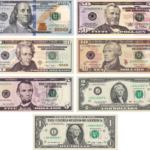Bond funds attract massive inflows as investors brace for rate cuts.
- U.S. stock funds gained an average of 6.6% in Q3, bringing year-to-date returns to 16.1%.
- Investors shifted focus from large tech stocks to sectors like utilities and gold, which saw significant gains.
- Bond funds attracted $128.5 billion in net inflows as investors anticipated Federal Reserve rate cuts.
- International stock funds experienced a net outflow of $22.3 billion in the same period.
Stock fund investors are looking at a promising 2024, with the average U.S. stock fund rising 6.6% in the third quarter, leading to a year-to-date return of 16.1%, according to LSEG data. This performance puts stock funds in a position to potentially match last year’s impressive 21% total return. Portfolio strategist George Smith from LPL Financial notes that September, typically seen as a challenging month for stocks, did not disappoint this year. He also downplays October’s historical reputation for market crashes, highlighting that the S&P 500 has averaged gains of 1.6% over the past decade in this month.nnIn the third quarter, the stock market saw a shift in focus from large tech stocks to other sectors. Utility-focused funds surged by 17.5% in the quarter, achieving a year-to-date return of 26.2%. Gold-oriented funds led the pack with a 27.3% increase. Meanwhile, large-cap growth funds, which heavily invest in tech stocks like Nvidia, still posted a solid 23.1% gain year-to-date, despite a modest 2.9% return in Q3.nnOn the bond side, the third quarter proved lucrative as investors anticipated the Federal Reserve’s rate cuts, leading to a net inflow of $128.5 billion into bond funds. U.S. stock funds also saw a positive inflow of $38.3 billion, while international stock funds faced a net outflow of $22.3 billion. Investment-grade bond funds averaged a 5.2% return in Q3, bringing their year-to-date performance to 4.9%. nnReflecting on historical market events, the article also recalls the Great Crash of 1929, which marked the beginning of a prolonged economic downturn. Sam Stovall from CFRA highlights that the crash was fueled by excessive borrowing for stock purchases, leading to a cascading effect when the market turned. The 1929 crash serves as a reminder of the potential volatility in the stock market, but current trends suggest a more stable outlook for investors today.·
Factuality Level: 8
Factuality Justification: The article provides accurate and objective information about stock market performance, fund categories, and investor behavior. It also includes historical context for comparison but does not include any irrelevant or sensational details. The article is well-researched and presents facts without personal perspective.
Noise Level: 6
Noise Justification: The article provides a detailed overview of stock fund performance and market trends, supported by data and expert opinions. However, it includes some historical context that may not be directly relevant to the current market analysis, which slightly detracts from its focus. While it offers insights into investment strategies and market behavior, it lacks a deeper exploration of systemic risks or accountability, which would enhance its analytical depth.·
Public Companies: LSEG (LSEG), Nvidia (NVDA)
Key People: George Smith (portfolio strategist for LPL Financial), Sam Stovall (chief investment strategist at CFRA), William Power (deputy section editor of Journal Reports)
Financial Relevance: Yes
Financial Markets Impacted: Yes
Financial Rating Justification: The article discusses stock-fund performance in the third quarter, with U.S.-stock funds rising 6.6% and year-to-date return at 16.1%. It also mentions investors shifting focus from tech stocks to other sectors like utilities and gold-oriented funds. Additionally, it highlights bond funds’ performance as investors poured money into them due to the Federal Reserve’s rate-cutting moves. The article also provides historical context about past market crashes such as the Great Crash of 1929 and the impact on financial markets.
Presence Of Extreme Event: No
Nature Of Extreme Event: No
Impact Rating Of The Extreme Event: No
Extreme Rating Justification: The article discusses stock market performance and historical financial events but does not report on any extreme event that occurred in the last 48 hours.·
Move Size: No market move size mentioned.
Sector: Technology
Direction: Up
Magnitude: Medium
Affected Instruments: Stocks
 www.wsj.com
www.wsj.com 




